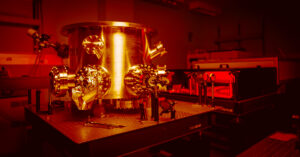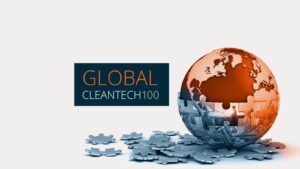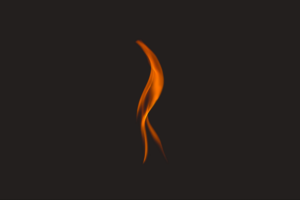Portfolio Management of Solar Photovoltaic (PV) Assets – From underperformance to maximum value
Like all stakeholders in large-scale industries, the actors within the solar market are susceptible to operation and maintenance costs that result from system underperformance, downtime or asset degradation. When a solar asset operates suboptimally, it can have repercussions from both cost and energy yield standpoints.
Across many of the industries we cover, we see more innovators trying to capture the true potential of assets through new enabling technologies that address asset underperformance.
One of these players within our network is Heliolytics, a solar farm asset inspection and analytics company. They took the time to get us up to speed on how innovation in aerial inspection is helping to support underperforming solar assets across the global solar market, which is expected to reach a capacity of 871 GW by 2022.
Rob Andrews, CEO of Heliolytics
Solar PV is the fastest growing source of energy generation globally, according to the IEA. This rapid expansion of the industry is being fueled by a rapidly decreasing levelized cost of energy, where new solar energy can now be cheaper than running existing fossil fuel infrastructure, according to GTM. At the same time, the financing terms of contracts are growing longer – PV plants are now assumed to produce power over 30-40 years. This combination of decreasing costs and increasing required asset lifetime means that new technologies and approaches are needed to ensure these projects remain profitable over their lifetime.
The scale of the PV challenge
PV was historically seen as a relatively simple energy asset class to maintain. However, a single utility scale site can have upwards of six million individual modules and a portfolio of rooftop systems can have 500 different sites spread across the continent. Each module represents a possible failure point within the system, and individual component faults can lead to long term performance degradation, safety risks, and long-term financial underperformance of the asset.
Aerial inspections
Aerial inspections have been developed to help address the issue of identifying module faults in these massive portfolios. Heliolytics was one of the first companies in the world to offer these services in 2014, and now has serviced over 15 GW of projects globally. From these inspections, we have found an average energy weighted fault rate of 1.2%, translating to over $23 million in lost annual revenue. In this blog, we’ll provide an overview of aerial inspection technology, and answer some common questions.
 Step 1 – collecting imagery
Step 1 – collecting imagery
Aerial inspections use sensor packages mounted on drone or airplane platforms to collect infrared and visible imagery of an entire PV system. All modules in the array are receiving the same amount of energy from the sun. A warm module means that the module is turning less energy from the sun into electricity, and therefore is operating at a lower efficiency. Therefore, the general goal of an inspection is to identify locations where the modules are warmer than their neighbours.
Step 2 – locating faults
The imagery collected from an aerial inspection is then fed through an analytics system to identify, classify, and locate all the faults on site. This provides system owners and operators with a view into the performance of 100% of their system to a cell level. This data arms them with the knowledge of exactly what fault types exist on their site – as well as their frequency, distribution and locations – and their associated impact on total system underperformance.
Why do PV systems need aerial inspections?
There are two main motivating factors why system owners and operators would be wise to integrate aerial inspections into their annual plans for all sites in their portfolio:
- predictive analytics and risk mitigation
- preventative and reactive actions
Predictive analytics and risk mitigation
Aerial inspections can proactively identify any unidentified fault or faults with minor energy impacts that could become major energy loss factors in the future. When combined with a database of historical fault trends, these individual faults can be used to generate a forward-looking model of potential issues which could arise within the array in the future.
The detection of emergent serial defects, module damage, and other widespread items allows the owner to fix these issues before significant energy loss is accumulated from the faults. Traditionally, the only way to find systemic issues in the array would be to identify a decrease in system output through continuous monitoring. However, by the time the fault has progressed to the point that it is measurable in this way, a significant amount of energy loss has already been accumulated by the project.
Portfolio-wide aerial inspections also provide owners and operators with full risk visibility into their full range of assets to control portfolio level risk. Consistent annual aerial inspections ensure any fault types or trends that occur across a portfolio are identified and addressed with on-site remediation or warranty submissions. These consistent inspections also allow owners and operators to monitor degradation rates of faults on site year over year and compare degradation throughout their portfolio.
Preventative and reactive
Aerial inspections are important for both preventative and reactive actions, with the goal of identifying faults on a site on a consistent basis to prevent future issues and to identify and locate faults on a site that are known to exist and cause underperformance. On average over 15 GW of inspections, Heliolytics has identified that a given site will have an energy weighted loss of 1.2%. Over our full portfolio of inspections, this translates to over $23 million in lost revenue yearly.
An annual aerial inspection also provides the owner and operator with a regular site assessment to identify faults that are currently causing significant energy loss and provide knowledge of what subtle faults they should keep an eye on and monitor over time. For example, a hot spot with a 5°C temperature differential is not yet a safety concern and does not have a major energy impact on site. However, this hot spot may change from one year to the next into a hot spot of 30°C temperature differential or even a string outage (as seen in the image below), which is then a safety concern or a major energy impact on site. Persistent monitoring of a site over time allows these trends to be identified and remediated early.

In this sample imagery from a site inspected in 2017 and again in 2018, you can see that two new hot spots appear in the aerial inspection in 2018 that did not exist in 2017. You can also see that two string outages appear in 2018 that previously only existed as hot spot faults in 2017.
Reactive aerial scans can also be completed for sites with known issues. For example, a site hit by a hail storm will have many broken modules and other faults that would cause a major energy impact. Paired with past data from annual inspections, an aerial inspection after the hail storm could provide benchmarking for establishing which faults were caused by the hail storm, and which faults existed before the hail storm. Armed with this knowledge, owners and operators are more likely to have an easier process submitting their insurance claims.
Why doesn’t Heliolytics use drones?
This is by far the most common question we hear. When Heliolytics started, we used drones for every inspection. However, we realized the inherent data quality and logistical issues associated with this platform and switched to an aircraft-based platform instead. Overall, there were four main motivating factors for this decision:
 Data quality – Without the weight and power restrictions of a drone, we developed a custom sensor package with IR and visible cameras that are 8x and 15x higher resolution respectively than camera systems that are compatible with drones. In addition to a higher spatial resolution, these cameras have a higher thermal resolution, meaning we can identify faults down to a temperature differential of 0.1°C, allowing us to detect subtle faults including PID, cell cracking, junction box heating, and water ingress.
Data quality – Without the weight and power restrictions of a drone, we developed a custom sensor package with IR and visible cameras that are 8x and 15x higher resolution respectively than camera systems that are compatible with drones. In addition to a higher spatial resolution, these cameras have a higher thermal resolution, meaning we can identify faults down to a temperature differential of 0.1°C, allowing us to detect subtle faults including PID, cell cracking, junction box heating, and water ingress.- Data consistency – On a clear day, irradiance changes at a rate of ~120 W/m²/hr and these changes in irradiance can mask thermal defects throughout an inspection. An aircraft-based platform obtains a true thermal snapshot of an entire system under consistent irradiance and temperature conditions due to the ability to acquire data as quickly as 100 MW/hr, which enables the analysis of true subtle thermal gradients across sites. In addition, because of the high speed of capture, the same aircraft can inspect a large volume of sites ensuring the same sensors, calibrations and staff are used in data collection. This provides a consistency of data within a portfolio, enabling the detection of systemic portfolio-wide issues.
- Scalability – As the PV industry expands, aircraft inspections are scalable to large projects and portfolios, and the platform can inspect over 1 GW in a day or up to 72 rooftop sites in a day. This platform is also scalable to global portfolios of any size and distribution, from rooftop portfolios with hundreds of sites under 500 kW to large utility portfolios of sites up to 750 MW.
- Advanced analytics – High-quality data allows an added depth of analytics that is not possible with drone data, which may be from different equipment, viewpoints, and calibrations. This is paired with an advanced Artificial Intelligence (AI) classification system trained using massive volumes of collected data. This ensures that defects can reliably be identified with high precision and accuracy.
There is no doubt data analytics and other digital enabling technologies will increasingly have an impact on asset inspection across the industries we cover. By some estimates, almost 50% of energy generation will be from solar and wind resources by 2050. Players will certainly have to consider advanced inspection as a key part of their activities if they wish to continue scaling profitably.
If you have any more questions, feel free to reach out to Cleantech Group, or Rob Andrews at Heliolytics.



